A Tale of Two State Capitols
Tennessee’s Capitol in Nashville — one of only 11 state capitols that doesn’t have a dome* — was completed in 1859, more than one year before construction began on California’s Capitol on December 4, 1860.
The cornerstone of the Greek revival structure was laid on July 4, 1845. Dominating a hill along Charlotte Ave. overlooking the city, the structure took 14 years to finish – the same length of time as California’s Capitol. Much of the construction was done by convicts and slaves.
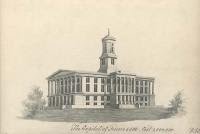 William Strickland, the architect, predicted the project would take three years. Costs were three times more than he estimated. An 1860 lithograph from the Tennessee State Archives says the final total was $1 million.
William Strickland, the architect, predicted the project would take three years. Costs were three times more than he estimated. An 1860 lithograph from the Tennessee State Archives says the final total was $1 million.
California’s overruns were significantly higher. Gov. John Weller pegged the initial price tag at $100,000 in 1860. When construction ended in 1874, the final tally was $2.5 million.
Like Reuben Clark, the architect of California’s Capitol, the Tennessee Capitol proved Strickland’s undoing.
Strickland died in 1854, shortly after lawmakers moved into the still-unfinished edifice. His funeral was held in the chambers of Tennessee’s House of Representatives. His son, Francis, completed the job.
In 1864, Clark was committed to a Stockton insane asylum. He died there in 1866.
“Continued and close attention to the building of the State Capitol in Sacramento” caused Clark’s insanity, according to hospital records.
Strickland is buried in a tomb he designed in the Tennessee capitol’s northeast portico.
Buried in the southeast wall is Samuel D. Morgan, “The Merchant Prince of Nashville,” whose financial ventures were solid enough that the Legislature authorized his company to issue scrip during the financial panic of 1837.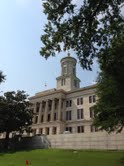
As a member of the Capitol building commission, Morgan was instrumental in choosing Strickland and quashing cost-cutting proposals by the Legislature.
Strickland came from Philadelphia where he worked with Benjamin Latrobe, the architect of the U.S. Capitol.
Both the U.S. Mint and the Second Bank of the United States in Philadelphia are Strickland creations. Like the Tennessee Capitol, the two buildings are heavily influenced by ancient Greek architecture.
Strickland lined the porticos of the Capitol with Ionic columns topped with what look like rolled scrolls.
The design of the porticos was Strickland’s take on the Erechtheum in Athens, a temple on the Acropolis with identical columns.
Similarly, the Capitol’s tower is modeled on a choragic monument built by Lysicrates in 333 B.C., also in Athens.
Choragic monuments were large pedestals built to display prizes won in athletic or musical competitions. None but Lysicrates’ monument survived antiquity.
To boost structural integrity, Strickland used iron trusses on the Capitol, making it one of the first buildings in the country with such underpinnings.
The Capitol’s exterior limestone was quarried nearby at 13th and Charlotte Ave., near the present I-40 freeway.
Marble for the interior came from Knoxville and Rogersville, 180 miles and 255 miles east of Nashville, respectively.
Granite for California’s Capitol initially came from Folsom. It was used on the first floor until Clark decided it was unsatisfactory. He switched to granite quarried in Penryn, which had a different hue, creating the Capitol’s “two-tone” appearance.
Tennessee’s ground floor once contained the office of the governor and the chambers of the state Supreme Court. The governor – currently Republican Bill Haslam — remains. His suite of offices boasts a spacious reception room with murals painted in the 1930s depicting key moments in the state’s history.
Thanks to a 1988 renovation, the court’s chambers — cut up into offices in the 1930s — have been restored to their original spartan 1850s appearance.
A ceiling fresco near the intersection of the hallways depicts the state seal and motto: “Agriculture and Commerce.”
Presidents and Other Tennesseans
Indoors and out, Tennessee’s three presidents are well represented at the Capitol.
There are three portraits and at least one bust of Andrew Jackson in the building. There’s an equestrian statute of the 7th president, dedicated in 1880, in the center of the garden along the eastern side of the building above 5th Street.
Nearby to the north in the same garden is the tomb of President James K. Polk who died at 53 of cholera in Nashville in 1849, just over three months after leaving office.
A protégé of Jackson, Polk’s one term as president saw Texas admitted as a state – a campaign pledge – and the expansion of U.S. territory to the Pacific Ocean as a result of victory in the Mexican-American War and settlement of a long-standing border dispute with England over Canada’s southern border.
Designed by Strickland, Polk’s monument originally stood on the front lawn of Polk’s home just down the hill at 7th and Union Ave., known as “Polk’s Place.”
In 1893, after Polk’s widow died and the house sold, the tomb was moved to the Capitol. Polk’s house was nearly purchased by
the state as a governor’s mansion in the 1890s but the deal fell through. A Best Western hotel occupies the site.
Both Polk and Andrew Johnson, who became president after Lincoln’s assassination, were governors of Tennessee. Before selecting him as his running mate in 1864, Lincoln named Johnson, then a U.S. Senator, the military governor of Tennessee, whose capital fell to the Union Army in 1862.
Shiloh, the bloodiest battle in American history at the time, was fought in southwestern Tennessee, 150 miles from Nashville, in February 1862. Of the 100,000 Confederate and Union soldiers who fought there, 25,000 lay dead or wounded by the battle’s conclusion.
At the head of stairs leading down from the garden to 5th Street, a statue of Sgt. Alvin C. York takes a bead on a state office building named for John Sevier, one of the commanders in the decisive Revolutionary War battle of King’s Mountain and Tennessee’s first governor.
York and seven other infantrymen took 32 machine guns, killed 28 German soldiers and captured 132 others. He was popularized – some say canonized — by Gary Cooper who portrayed him in the 1941 movie, “Sergeant York.”
In the western garden is a statue of Sam Davis, the “Boy Hero of the Confederacy.” A spy or courier, depending on the account, Davis was captured by the Union Army. He refused to divulge the names of other spies or couriers and was hanged. He was 21.
At the top of the stairs leading to the Capitol’s second floor is a bust of David Glasgow Farragut, Tennessee native son and admiral in the U.S. Navy during the Civil War. He’s immortalized for his order at the battle of Mobile bay: “Damn the torpedoes, full speed ahead.”
Home of the General Assembly
The second floor of Tennessee’s capitol, just like California’s, is the domain of the Legislature. Broad, fold-back stairs lead to a central hallway with a spacious sitting area of dark leather chairs and sofas on the eastern side.
The entire southern part of the floor is the airy, two-story chamber of the 99-member House of Representatives. Each member represents roughly 60,000
people – significantly fewer than the 465,000 each of California’s 80 Assembly members represent. Tennessee’s population is 6.5 million. California’s is nearly six times that.
In the current 108th General Assembly, Tennessee’s house has a 70-member Republican majority. The breakdown is even more lop-sided in the 33-member Senate, which has 26 Republican members.
The house’s chamber, flanked on the second floor by galleries behind eight Ionic columns, is almost exclusively stone. The frosted glass globes on the bronze chandeliers feature engraved stars, recalling the state flag. Winches in the attic lower the chandeliers when bulbs need replacement.
Smaller and darker because of its greater use of wood, the Senate chamber occupies the northeast corner of the Capitol’s second floor. The electrified “gasoliers’ are original. On the Senate’s globes are etched corn, tobacco and elk heads. They were, respectively, Tennessee’s biggest cash crops before the Civil War and one of its most popular game animals.
Adding to its more somber feel, the 12 columns supporting the Senate gallery are of red marble with black bases.
Senators, like representatives, are paid $19,009 annually. Plus $171 per diem for a Capitol workday. The Tennessee constitution says both the Senate and the House can meet no more than 90 days every two-years.
Like California, since Tennessee’s house and senate meet only a couple days each week, annual sessions usually run from January to May. Recent fiscal crises have kept them working into July.
A standout room is the three-story former State Library next to the Senate leader’s offices.
Codebooks occupy lower shelves. Portraits of politicians – Jackson, of course – and other Tennessee cultural figures, cover part of another wall.
Now a lounge the room is dominated by a wrought iron spiral staircase that winds to the topmost bookcases.
Restoration and Renovation
By the early 1950s, the building’s exterior limestone had deteriorated enough that the General Assembly appropriated money for repairs. The new limestone came from Indiana. It’s brown hue contrasts with the gray of the original – not unlike California’s two granites.
As part of interior renovations, a bright, windowless tunnel and street-level entrance on Charlotte Ave. was added in 1959.
The tunnel is dedicated to Lem Motlow and his son, Rep. Reagor Motlow. Jack Daniels, Motlow the Elder’s uncle, turned over operation of his Lynchburg distillery to his favorite nephew in 1907. Lem’s son, Reagor, was general manager under his father and became president on his death in 1947.
In 2012, another major renovation was conducted primarily to replace heating, ventilation and air conditioning systems installed in the 1950s renovation.
The recent work laid to rest a long-held rumor that a secret passageway from the governor’s office, built before Union troops captured the capital, provided an escape route to tunnels leading to the Cumberland River six blocks away.
No passageway or tunnels were found.
_______________________
* The other domeless state capitols: Alaska, Delaware, Hawaii, Louisiana, New Mexico, New York, North Dakota, Ohio, Oregon and Virginia.
-30-
Filed under: Great Moments in Capitol History
- Capitol Cliches (16)
- Conversational Currency (3)
- Great Moments in Capitol History (4)
- News (1,288)
- Budget and Economy (383)
- California History (139)
- Demographics (11)
- Fundraising (74)
- Governor (122)
- Legislature/Legislation (270)
- Politics (173)
- State Agencies (38)
- Opinionation (36)
- Overheard (246)
- Today's Latin Lesson (45)
- Restaurant Raconteur (21)
- Spotlight (110)
- Trip to Tokyo (8)
- Venting (184)
- Warren Buffett (43)
- Welcome (1)
- Words That Aren't Heard in Committee Enough (11)

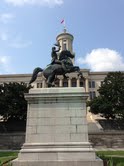
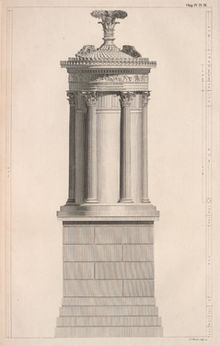


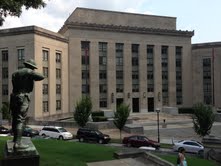




No Comments »
No comments yet.
RSS feed for comments on this post.
Leave a comment